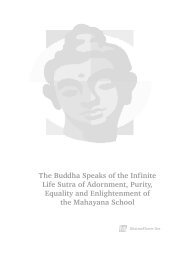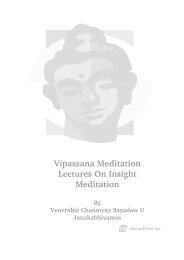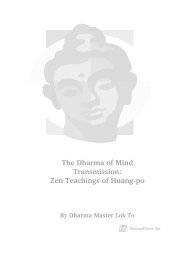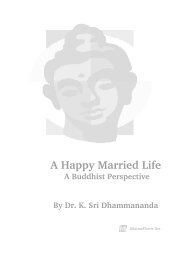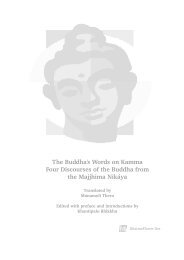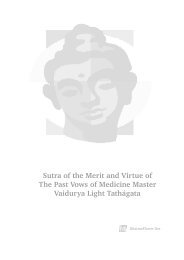Buddhism As An Education - DharmaFlower.Net
Buddhism As An Education - DharmaFlower.Net
Buddhism As An Education - DharmaFlower.Net
You also want an ePaper? Increase the reach of your titles
YUMPU automatically turns print PDFs into web optimized ePapers that Google loves.
Chapter FourThe Methodology and Symbolism of the Buddhist <strong>Education</strong>alSystemThe Continuing <strong>Education</strong> System for TeachersThe continuing education system for teachers was first established byBuddha Shakyamuni. Many of his students were well accomplishedunder his instruction. Every year, these students were assigned toteach at different places for nine months. In India, the rainy seasonruns from mid-April to mid-July. Since it was inconvenient to traveland teach during those three months, all the students would comeback to meet with the Buddha to receive additional teachings and tolearn from each other in class discussions. This was called thesummer retreat and it parallels what is currently known as continuingeducation for teachers. The modern continuing educational system isnecessitated by the advancement in technology. However, twenty-fivehundred years ago, Buddha had already adopted this idea in bringinghis students back for additional teachings.The Artful Buddhist TeachingBuddhist teaching is full of artistic expressions. It was originally aneducation, which combined what was equivalent to to-day's museumand school system. Therefore, the "Si" combined the traditionalschool, library and museum. In ancient China, the traditional schoolsystem was not universal. Most students went to a "Si" to studybecause it usually had a complete collection of books, similar totoday's library. The collections included not only sutras, but alsoalmost every kind of publication. The monks were familiar with<strong>Buddhism</strong>, Confucianism, Taoism and ancient Chinese texts. Theywere capable of answering questions and were well versed on varioussubjects. Consequently, Buddhist institutions began to take over theeducational mission for China.Typical Buddhist buildings are expressions of art, which are called"Expressions of <strong>Buddhism</strong>." However, Buddha and Bodhisattvastatues do not represent polytheism, the worship of more than onegod. Each statue serves to inspire wisdom and awakening in each ofus. They also represent certain aspects of <strong>Buddhism</strong>, which remindpractitioners of the particular topic of teaching. For example, GuanYin Bodhisattva, the most popular Bodhisattva in China, representsInfinite Compassion. When we see this statue, it reminds us to applycompassion when dealing with the world, its people andsurroundings. However, people nowadays worship Guan YinBodhisattva as a god and pray for the relief of suffering and toeliminate obstacles. This is a superstitious view and misconceptionbecause people forget the fact that the statues are expressions ofconcepts in <strong>Buddhism</strong>.7



